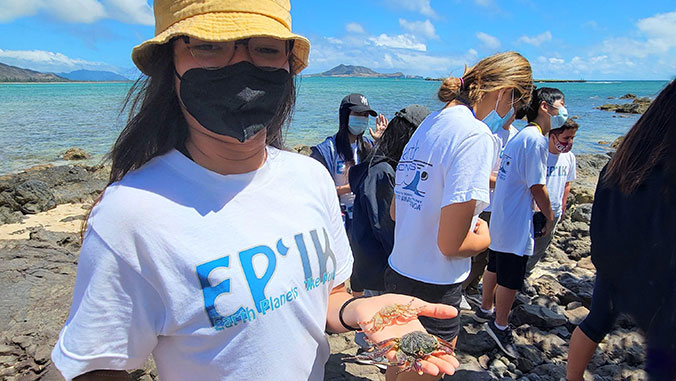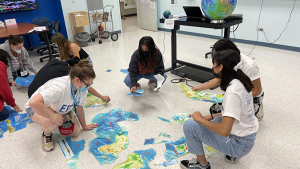
To help recruit and prepare an emerging generation of geoscientists in Hawaiʻi, the University of Hawaiʻi at Mānoa hosted 13 high school students and two teachers from across Oʻahu during an engaging two-week summer program that included classroom lectures, laboratory experiments and field activities.
Bridget Smith-Konter, program coordinator and professor of Earth sciences in the UH Mānoa School of Ocean and Earth Science and Technology (SOEST), said the Earth, Planets, ʻIke and Kuleana (EP‘IK) Summer Program aims to develop a meaningful and sustainable educational pathway for local students that provides Earth and planetary science learning opportunities while emphasizing ʻike Hawaiʻi (Hawaiian knowledge) and kuleana (responsibility). Additionally, the program addresses the growing need to diversify the geosciences and build upon existing strengths at UH Mānoa.

In this third year of the program, students learned about deep ocean volcanism, the solar system and much in between, including earthquakes, beach dynamics, climate change and water resources. Through hands-on experiments, computer modeling, data analysis and field excursions around UH Mānoa and Oʻahu, the activities emphasized critical thinking and inquiry-based learning, and incorporated place-based aspects of Hawaiian geology and Native Hawaiian culture.
See more stories on UH Mānoa becoming a Native Hawaiian Place of Learning.
“After participating in EP‘IK summer I am much more enthusiastic about pursuing a career as a scientist,” said one EP‘IK student. “[Prior] to this program, I had little insight into the world of geoscience and only had experience in lab-like settings. This program helped me to see that different careers in geoscience were extremely enticing, such as going out to beaches to survey the sand erosion, or conducting research in the deep sea, or even surveying and creating maps of different areas and climates.”

Each theme of the program connected traditional knowledge as a way to provide accurate and relatable commonalities between Earth science and Native Hawaiian knowledge and practices.
“Our team of more than 15 instructors thoughtfully developed place- and culture- based lessons and activities that were very engaging to students,” said Alyssa Anderson, EP‘IK Summer Program manager and SOEST researcher. “It was wonderful to see this younger generation’s enthusiasm for learning about the unique setting of the Hawaiian Islands.”
For more information, see SOEST’s website.
–By Marcie Grabowski

